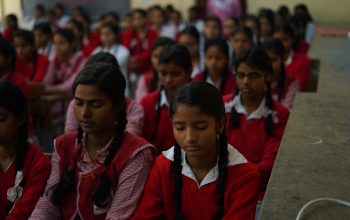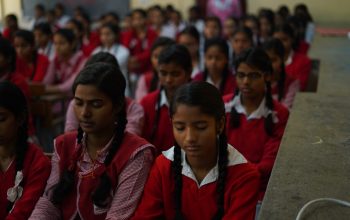In today’s rapidly evolving world, the significance of a dynamic learning experience cannot be overstated. Traditional educational models, which often rely on rote memorization and passive learning, are increasingly inadequate in preparing students for the complexities of modern life. A dynamic learning experience, characterized by engagement, adaptability, and relevance, fosters an environment where students can thrive.
This approach not only enhances knowledge retention but also cultivates a love for learning that extends beyond the classroom. By integrating various teaching methods and encouraging active participation, educators can create a vibrant atmosphere that inspires curiosity and critical thinking. Moreover, a dynamic learning experience recognizes the diverse needs and learning styles of students.
Each learner brings unique perspectives and strengths to the educational setting, and a one-size-fits-all approach often leaves many behind. By embracing flexibility in teaching strategies—such as collaborative projects, hands-on activities, and technology integration—educators can cater to individual preferences and promote inclusivity. This tailored approach not only boosts student engagement but also empowers learners to take ownership of their education, fostering a sense of agency that is crucial for lifelong learning.
Key Takeaways
- A dynamic learning experience is crucial for engaging students and promoting active learning.
- Identifying and removing outdated curriculum components is essential for keeping education relevant and effective.
- Incorporating technology and real-world applications into the curriculum helps students connect learning to the world around them.
- Emphasizing critical thinking and problem-solving skills prepares students for success in the modern workforce.
- Fostering creativity and innovation in learning encourages students to think outside the box and develop new ideas.
Identifying Outdated Curriculum Components
As educational paradigms shift, it becomes essential to identify and address outdated curriculum components that may hinder student success. Many traditional curricula are rooted in historical practices that do not align with contemporary societal needs or technological advancements. For instance, subjects that emphasize memorization over application can leave students ill-prepared for real-world challenges.
By critically evaluating existing curricula, educators can pinpoint areas that require modernization, ensuring that the content remains relevant and engaging for today’s learners. Furthermore, outdated curriculum components can perpetuate inequities in education. When curricula fail to reflect diverse perspectives or current events, they risk alienating students from various backgrounds.
This lack of representation can diminish students’ sense of belonging and relevance in their education. By actively seeking to update curricula to include diverse voices and contemporary issues, educators can create a more inclusive learning environment that resonates with all students. This process not only enriches the educational experience but also prepares students to navigate a multicultural world with empathy and understanding.
Incorporating Technology and Real-World Applications

The integration of technology into the learning experience has transformed education in profound ways. In an age where digital literacy is paramount, incorporating technology into the curriculum is no longer optional; it is essential. Tools such as interactive software, online resources, and virtual simulations can enhance traditional teaching methods by providing students with opportunities to engage with content in innovative ways.
For instance, using educational apps or platforms allows students to collaborate on projects in real-time, regardless of their physical location. This not only fosters a sense of community but also equips learners with the technological skills necessary for success in the 21st century. In addition to technology, emphasizing real-world applications within the curriculum is crucial for making learning meaningful.
When students can see the relevance of their studies to everyday life, they are more likely to engage deeply with the material. For example, incorporating case studies from various industries or inviting guest speakers who are experts in their fields can bridge the gap between theory and practice. By contextualizing lessons within real-world scenarios, educators can inspire students to think critically about how their knowledge applies beyond the classroom walls, ultimately preparing them for future careers and civic responsibilities.
Emphasizing Critical Thinking and Problem-Solving Skills
| Metrics | 2019 | 2020 | 2021 |
|---|---|---|---|
| Number of critical thinking workshops | 15 | 20 | 25 |
| Percentage of employees trained in problem-solving skills | 60% | 65% | 70% |
| Number of critical thinking assessments conducted | 100 | 120 | 150 |
In an era characterized by rapid change and complexity, critical thinking and problem-solving skills have emerged as essential competencies for success. Educators must prioritize these skills within the curriculum to equip students with the tools necessary to navigate challenges effectively. Critical thinking involves analyzing information, evaluating evidence, and making informed decisions—skills that are invaluable in both personal and professional contexts.
By fostering an environment where questioning and inquiry are encouraged, educators can help students develop a mindset that values exploration and intellectual curiosity. Moreover, problem-solving skills empower students to approach challenges with confidence and creativity. When faced with real-world problems, students who have honed their problem-solving abilities are better equipped to devise innovative solutions.
Educators can facilitate this process by presenting students with complex scenarios that require collaboration and critical analysis. Through group discussions, debates, and hands-on projects, learners can practice these skills in a supportive environment. As they engage in problem-solving activities, students not only gain practical experience but also learn to appreciate diverse perspectives and approaches to challenges.
Fostering Creativity and Innovation in Learning
Creativity is often regarded as a vital component of effective learning, yet it is frequently overlooked in traditional educational settings. Fostering creativity within the curriculum encourages students to think outside the box and explore new ideas without fear of failure. By creating an environment that values experimentation and originality, educators can inspire students to express themselves artistically and intellectually.
This creative freedom not only enhances engagement but also cultivates resilience as students learn to embrace challenges as opportunities for growth. Innovation is closely tied to creativity; it involves applying creative ideas in practical ways to solve problems or improve existing processes. In today’s fast-paced world, innovation is crucial for success across various fields.
Educators can promote innovation by encouraging students to work on projects that address real-world issues or by integrating design thinking methodologies into the curriculum. By providing opportunities for students to brainstorm solutions and prototype their ideas, educators can nurture a culture of innovation that empowers learners to become proactive contributors to society.
Promoting Collaboration and Communication

Collaboration and communication are fundamental skills that prepare students for success in both academic and professional environments. In an increasingly interconnected world, the ability to work effectively with others is paramount. Educators can promote collaboration by designing group projects that require teamwork and collective problem-solving.
These collaborative experiences not only enhance social skills but also teach students how to navigate differing opinions and perspectives—an essential aspect of effective communication. Effective communication goes hand-in-hand with collaboration; it involves articulating ideas clearly and listening actively to others. By incorporating activities such as presentations, debates, and peer feedback sessions into the curriculum, educators can help students develop strong communication skills.
These experiences encourage learners to express their thoughts confidently while also valuing the input of their peers. As students engage in collaborative discussions and projects, they build relationships based on mutual respect and understanding—skills that will serve them well in their future endeavors.
Implementing Project-Based Learning and Experiential Activities
Project-based learning (PBL) is an instructional approach that emphasizes active exploration through hands-on projects. This method allows students to engage deeply with content while developing critical skills such as research, collaboration, and time management. By working on real-world projects that align with their interests or community needs, students become active participants in their learning journey rather than passive recipients of information.
PBL fosters a sense of ownership over the learning process, motivating students to invest time and effort into their work. Experiential activities further enhance the learning experience by providing opportunities for students to apply their knowledge in practical settings. Field trips, internships, service-learning projects, and simulations allow learners to connect theoretical concepts with real-life applications.
These experiences not only deepen understanding but also help students develop essential life skills such as adaptability and resilience. By immersing themselves in authentic situations, learners gain valuable insights into their fields of interest while building confidence in their abilities.
Assessing and Adapting the Curriculum for Continuous Improvement
The process of assessing and adapting the curriculum is vital for ensuring its effectiveness in meeting the needs of all learners. Regular evaluation allows educators to identify strengths and weaknesses within the curriculum while considering feedback from students, parents, and other stakeholders. By employing various assessment methods—such as surveys, focus groups, or performance evaluations—educators can gather valuable insights into how well the curriculum aligns with student needs and contemporary educational standards.
Continuous improvement requires a commitment to flexibility and innovation within the curriculum design process. As societal needs evolve and new research emerges regarding effective teaching practices, educators must be willing to adapt their approaches accordingly. This may involve integrating new technologies, revising outdated content, or incorporating emerging pedagogical strategies such as blended learning or personalized instruction.
By fostering a culture of continuous improvement within educational institutions, educators can ensure that curricula remain relevant, engaging, and effective in preparing students for success in an ever-changing world.
For educators and curriculum developers seeking detailed information on how user data might influence educational content and privacy concerns, it’s essential to understand the various policies that govern user interactions. A particularly relevant resource is the Cookie Policy at ClompCorp. This document provides insights into how cookies are used to track user behavior, which can be crucial for tailoring educational materials and understanding engagement patterns in digital learning environments.
FAQs
What is a curriculum?
A curriculum is a set of educational plans and guidelines that outline the content and learning objectives for a specific course or program of study.
What is the purpose of a curriculum?
The purpose of a curriculum is to provide a structured framework for teaching and learning, ensuring that students receive a comprehensive and cohesive education in a particular subject or field.
What does a curriculum typically include?
A curriculum typically includes a list of learning objectives, a sequence of topics or units to be covered, instructional materials, assessment methods, and guidelines for teaching and learning activities.
Who develops a curriculum?
Curriculum development is typically a collaborative effort involving educators, subject matter experts, curriculum specialists, and educational administrators. It may also involve input from stakeholders such as parents, students, and community members.
How often is a curriculum updated?
Curriculum updates can vary depending on the educational institution and the subject area. Some curricula are updated on a regular basis to reflect changes in knowledge and best practices, while others may undergo less frequent revisions.
What are the different types of curriculum?
There are various types of curriculum, including formal (officially prescribed by an educational institution), informal (unplanned or incidental learning experiences), hidden (unintended or implicit lessons), and null (lack of a formal curriculum). Additionally, there are specific curricula for different subjects and grade levels.



